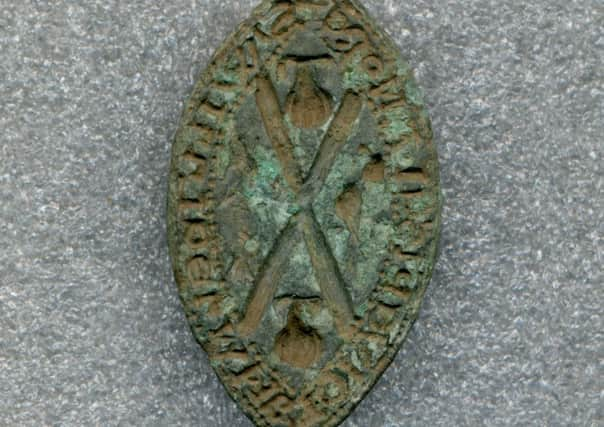Centuries-old bishop's seal matrix discovered in Fife


And a medieval seal matrix, which belonged to a key figure in the wars of Scottish independence, was also among the highlights of the annual report on Treasure Trove in Scotland published by the Crown Office.
It revealed last year saw a rise in the number of archaeological discoveries reported to the Queen’s and Lord Treasurer’s Remembrancer which were allocated to museums across Scotland.
Advertisement
Hide AdAdvertisement
Hide AdThe 17th-century button proclaiming political allegiance to William of Orange was found at Dalreoch, West Dunbartonshire, and has been given to Clydebank Museum and Art Gallery.
The crudely-made pewter button shows the bust of King William II of Scotland, the monarch who overthrew King James during the Glorious Revolution of 1688.
Cheaply-made and produced in large numbers, buttons like this were a form of popular politics where the wearer publicly displays their political allegiance and, given the political instability at the time, could be extremely provocative and was likely done from a position of political strength, the report said,The seal matrix belonging to William de Lamberton, Bishop of St Andrews from 1297 to 1328, was found in Boarhills, Fife, and has been given to the Fife Cultural Trust.
The bishop campaigned for Scottish independence alongside William Wallace and Robert the Bruce.
• READ MORE: Scottish castle once used as a pigsty up for sale
Matrices were used on charters and other documents - the one found appears to be a smaller and simpler version of the seal of de Lamberton known from surviving medieval charters.
Advertisement
Hide AdAdvertisement
Hide AdFurther finds include a 17th-century toy rattle, found in Pitlochry, a Roman wine cup handle discovered at Castle Douglas, Dumfries and Galloway and a medieval brooch, found in Cullen, Moray.
The report covers the period from April 1 2015 to March 31 2016. Under Scots law, the Crown can claim any archaeological objects found in Scotland.
David Harvie, appointed to the role of Queen’s and Lord Treasurer’s Remembrancer in April this year, said: “It is important to recognise the role played by finders, whose discoveries are key to ensuring these objects are preserved and enjoyed in museums across Scotland, both for the benefit of the public who visit them and for the scholars who can interpret these objects.”
DOWNLOAD THE SCOTSMAN APP ON ITUNES OR GOOGLE PLAY